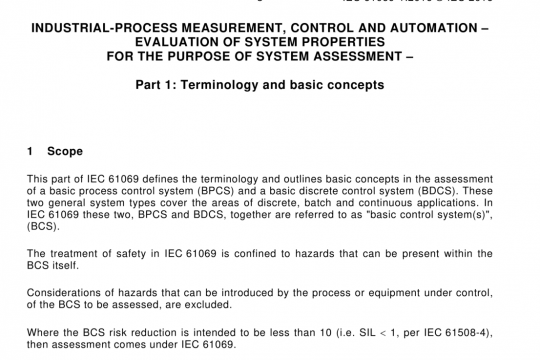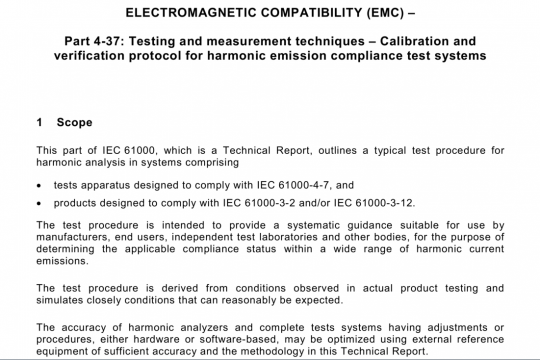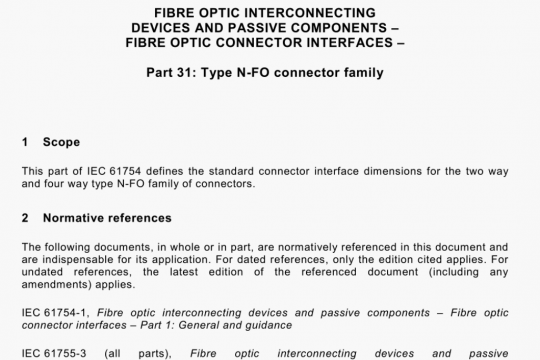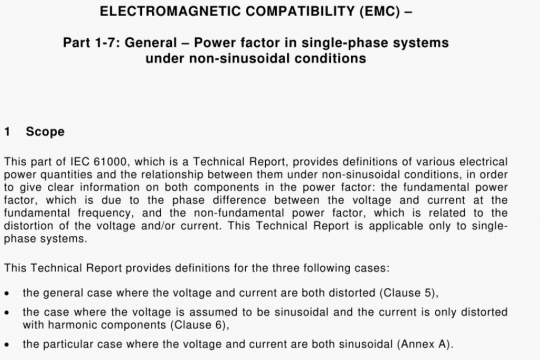EN IEC 60580 pdf free download
EN IEC 60580 pdf free download.Medical electrical equipment – Dose area product meters.
4.5 General test conditions
4.5.1 STANDARD TEST CONDITIONS
The STANDARD TEST CONDITIONS listed in Table 3 shall be met during the test procedure except
a) for the INFLUENCE QUANTITY under investigation;
b) where local conditions of temperature and relative humidity are outside the STANDARD TEST CONDITIONS. In this case the tester shall demonstrate the validity of the test results.
4.5.2 Test of components
The preferred procedure for verifying that the performance requirements are met is to test the components separately, in which case:
— tests on the RADIATION DETECTOR shall be performed using a “high-precision” MEASURING ASSEMBLY;
— tests on the MEASURING ASSEMBLY shall be carried out using a “high-precision” current or charge source, as required, connected to the input.
In this context, “high precision” means that the PERFORMANCE CHARACTERISTICS of the test equipment shall be such that they perturb the value of the particular PERFORMANCE CHARACTERISTIC being measured by less than one-quarter of the LIMITS OF VARIATION.
Any tests may be carried out using the complete DOSE AREA PRODUCT METER; in particular, this is the preferred method for investigating the effects of high-frequency electromagnetic fields and electrostatic discharges on a cable-connected RADIATION DETECTOR supplied with a MEASURING ASSEMBLY as a system. Some tests performed with the whole system cannot give information as to whether the origin of the VARIATION lies in the RADIATION DETECTOR or in the MEASURING ASSEMBLY (e.g. RADIATION DETECTOR LEAKAGE CURRENT and ZERO DRIFT). If a complete system is tested and the relevant INFLUENCE QUANTITY affects both parts, the quadratic sum of the separate LIMITS OF VARIATION may be taken as an overall LIMIT OF
VARIATION.
4.5.3 STABILIZATION TIME
The instrument shall be switched on for at least the STABILIZATION TIME quoted by the MANUFACTURER, before the start of the compliance test.
In addition, the RADIATION DETECTOR should be allowed to attain thermal equilibrium with the environment and it should have the polarizing voltage, if needed, applied for a period of time equal to or greater than the specified STABILIZATION TIME.
4.5.4 Adjustments during test
Compliance tests shall be performed with the instrument ready for use, after the STABILIZATION TIME and after making any necessary preliminary adjustments. During the tests, adjustments may be repeated at intervals as long as they do not interfere with the effect to be verified. For example, zero setting is not permitted during tests for measuring the RADIATION DETECTOR
LEAKAGE CURRENT.
4.5.5 Uniformity of RADIATION field
The uniformity over the part of the USEFUL FIELD used for the compliance test shall be checked, for example, by scanning the RADIATION field with a small RADIATION DETECTOR compared with the size of the USEFUL FIELD. Appropriate corrections shall be made to ensure an uncertainty of the test results of not more than one-fifth of the LIMITS OF VARIATION under test.
NOTE The field uniformity of any X-RAY TUBE is subject to deterioration in use; regular checks are made.
4.6 Statistical fluctuations
At low DOSE AREA PRODUCT and DOSE AREA PRODUCT RATES the magnitude of the statistical fluctuations of the instrument’s reading due to the random nature of the RADIATION alone may be a significant fraction of the VARIATION of the mean reading permitted in the test. A sufficient number of readings shall be taken to ensure that the mean value of such readings may be estimated with sufficient precision to demonstrate compliance or non-compliance with the test requirements. Table 4 provides guidance on the number of readings required to determine true differences between two sets of instrument readings at the 95 % confidence level. The number of readings, ii, and the COEFFICIENT OF VARIATION, v, of the sets of readings (assumed to be equal for each set) is listed.EN IEC 60580 pdf download.




